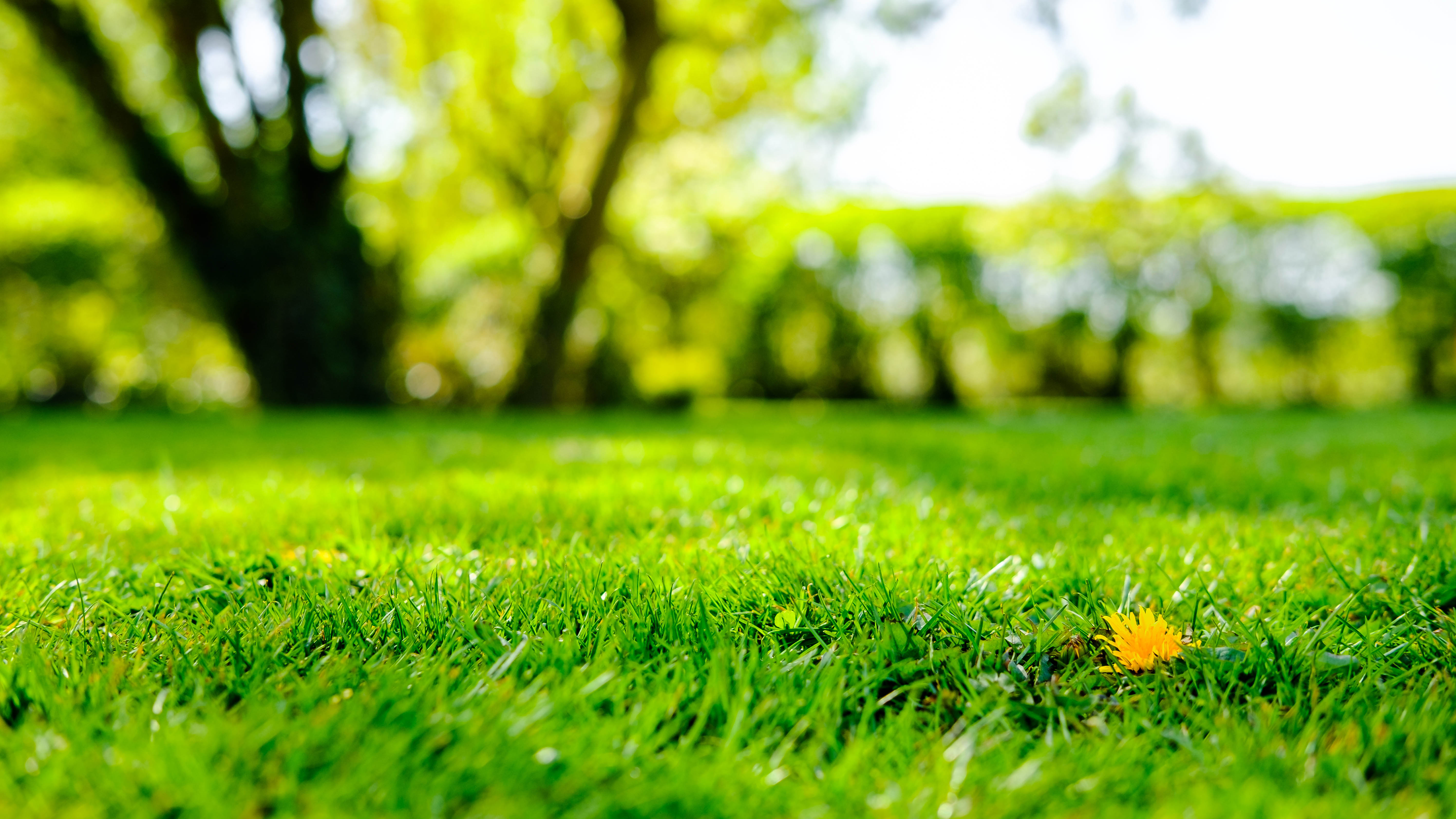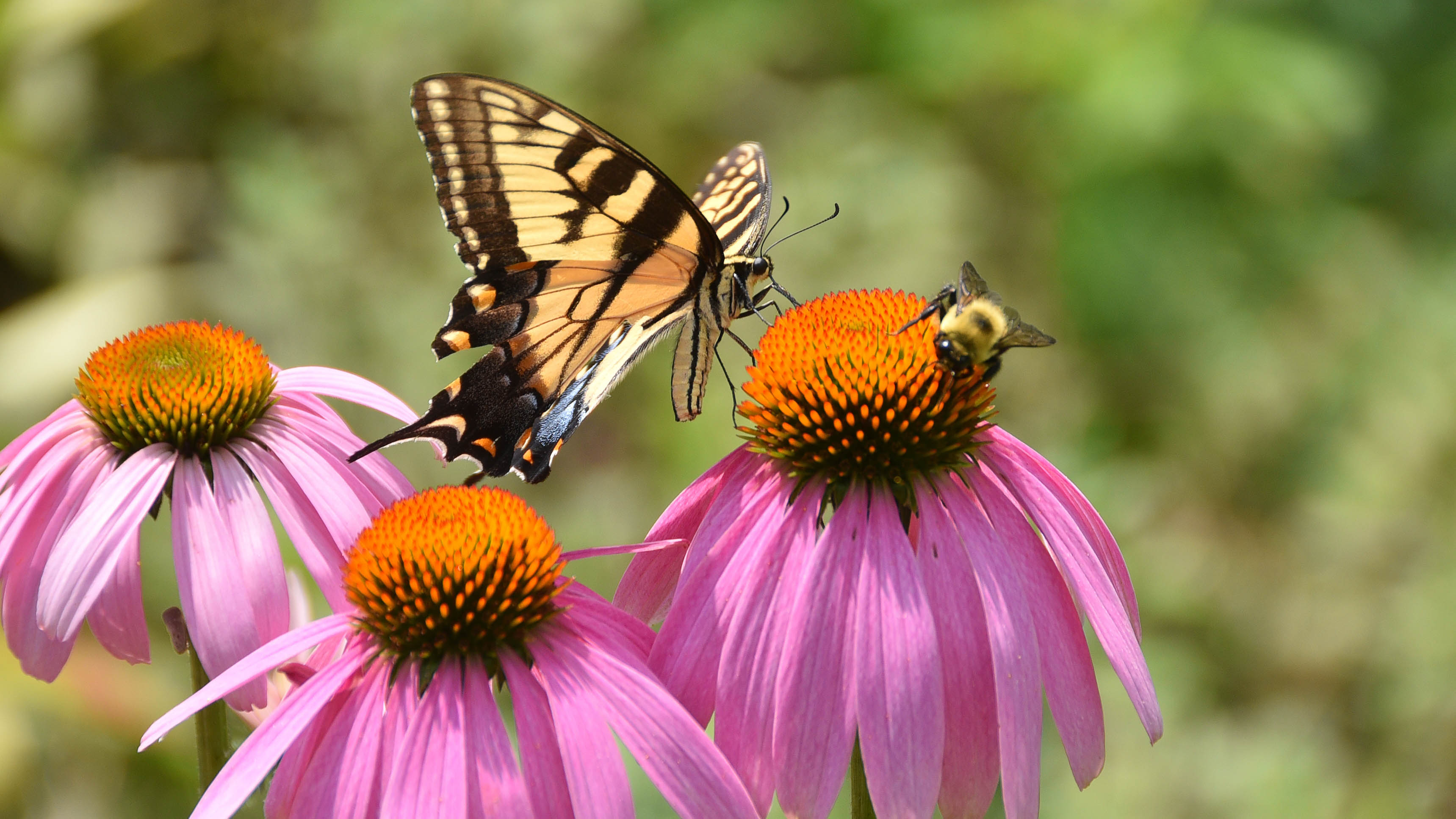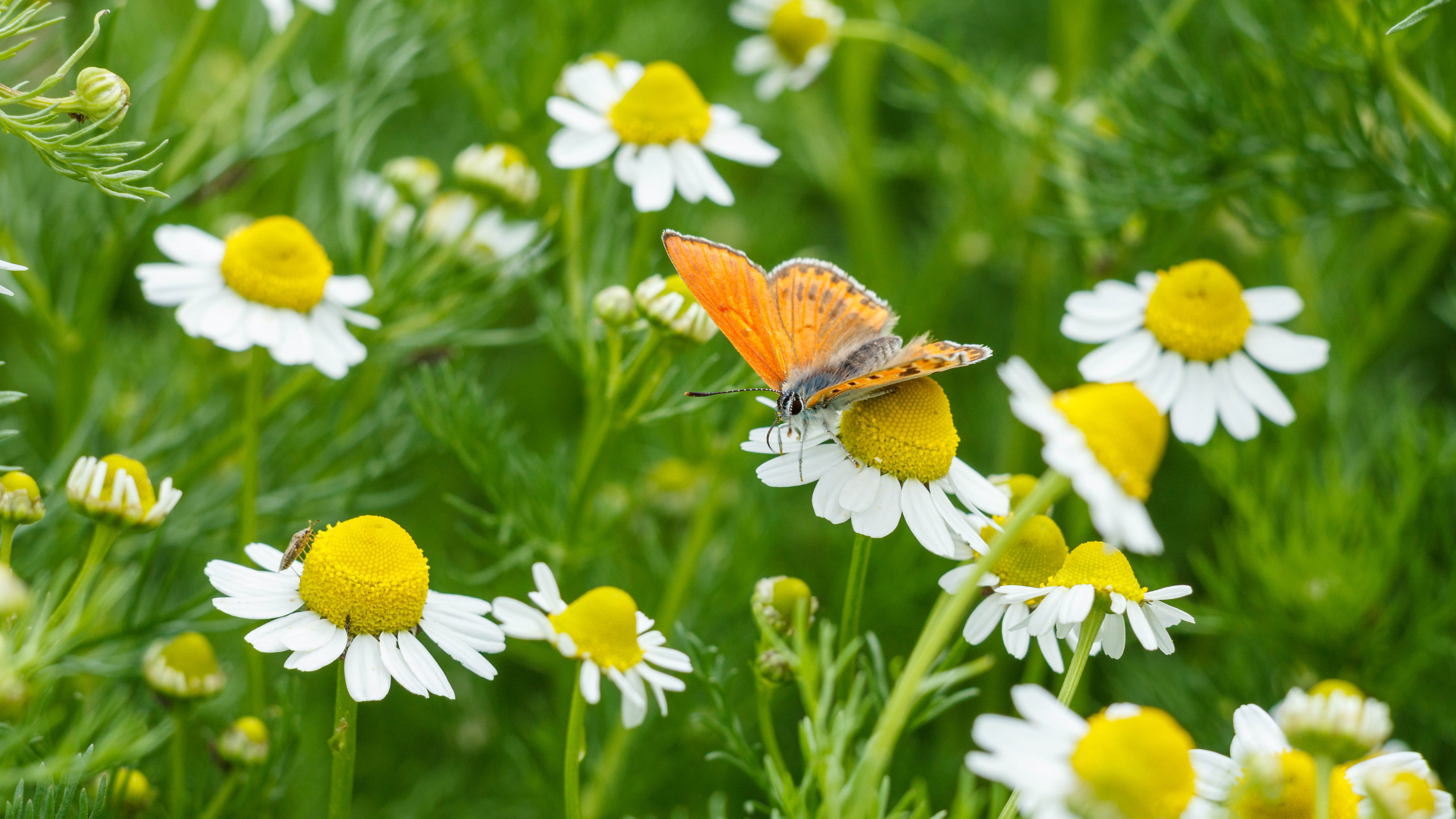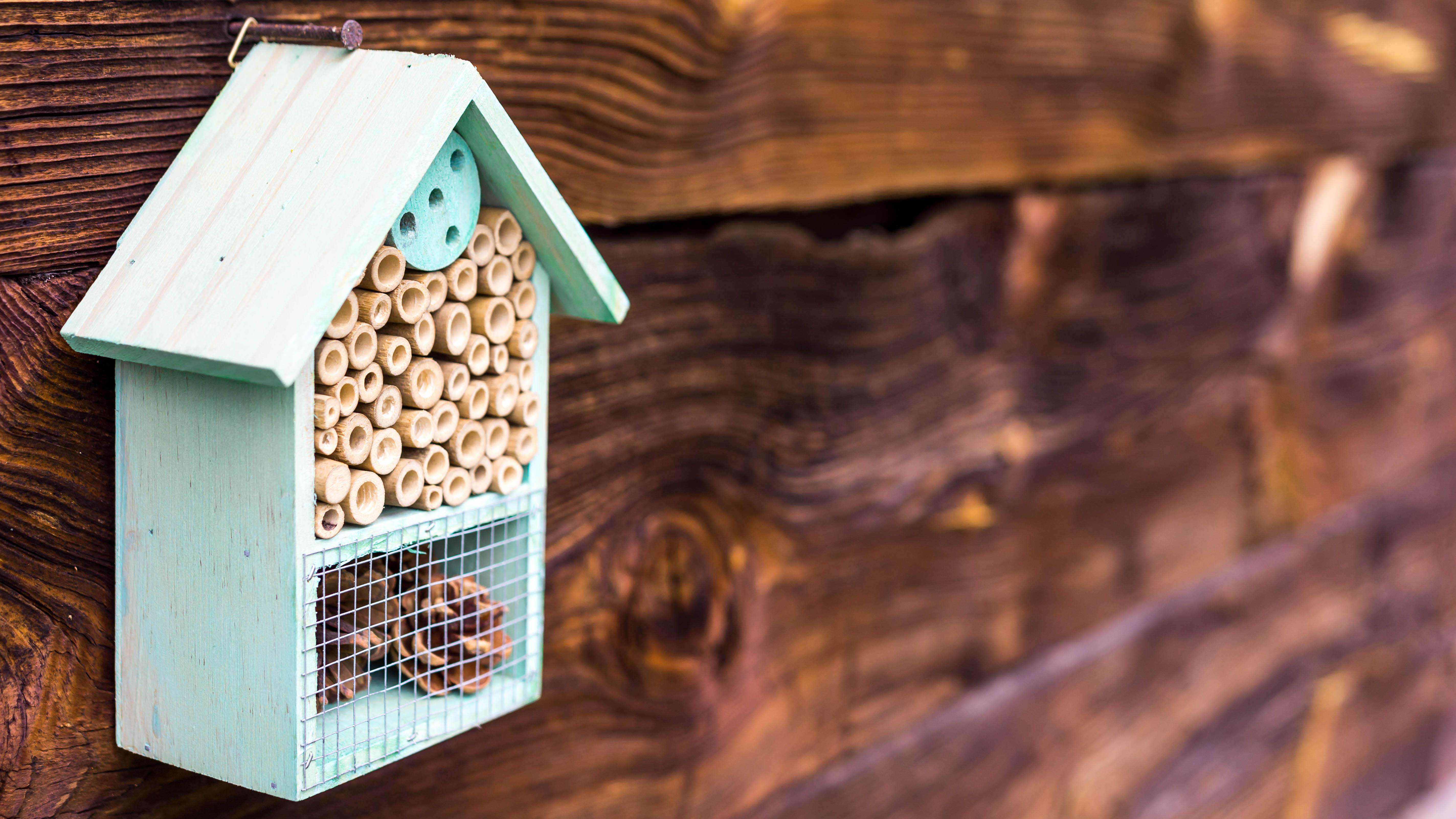No Mow May — 7 reasons to stop mowing your lawn this month
Here’s why you should hold your lawn mower back this month

A lawn with a single dandelion growing in it
(Image credit: Shutterstock)No Mow May is an environmental trend taking the world by storm. And it’s getting more and more popular each year. People across the globe are hitting pause on their lawn mowing to make a difference, but what exactly is No Mow May and why should you take part?
With there being 9 ways to get the most out of your lawn mower, why should you leave your grass to grow?
Here, we will discuss the benefits of this movement as well as what you need to do to take part. We will look into how it impacts your yard as well as tips to improve your contribution. No only will we consider the environmental benefits, we will also look into why giving the lawn mower a break can aid the health of your lawn in general.
So, here’s what you need to know about No Mow May along with 7 reasons you should stop mowing your lawn this month. It’s not too late to take part! Although, if leaving your lawn uncut for one month is not for you, here are 7 No Mow May alternatives to attract pollinators to your yard. Or check out Is No Mow May worth it? What I learned from taking part.
What is No Mow May?

As the name suggests, No Mow May encourages gardeners to avoid mowing their lawns during May, or at least to mow less often. This gives wildflowers a chance to grow and bloom, which would otherwise be lost to the lawn mower blades. The intention behind this is to feed and support pollinators, such as bees, butterflies and grasshoppers. These early season insects would likely struggle to find such resources and deteriorate where lawns are mowed regularly.
So, by lessening your mowing efforts this spring, in effect, you're aiding beneficial insects as well as encouraging local plant life to grow. Add to that, you will save yourself the time and energy spent mowing the lawn. It’s a win-win.
Of course, it’s worth mentioning you may regard some of these wildflowers as weeds, which may not be to everyone’s liking. But, dandelions and white clover, for instance, will produce nectar along with everything else, so this is all part of the process. No plant is too small to contribute; even daisies will make a difference.
Sign up to get the BEST of Tom's Guide direct to your inbox.
Get instant access to breaking news, the hottest reviews, great deals and helpful tips.
How can I take part in No Mow May?
Taking part couldn’t be more simple — just give the lawn mower a break. We’re not saying you need to stop mowing completely; even mowing less often can make a big difference to your local wildlife. You could alternatively leave some areas of grass longer than others.
It's worth checking out your local homeowners association (HOA) or suburb regulations in terms of grass height to ensure you won't be in breach of this if you want to take part in No Mow May.
The rate and height at which we cut our grass will vary depending on the grass type, location and weather, not to mention our own schedule. Generally speaking, once every week or two weeks is pretty standard. If you can cut this back (pun intended) to every three or even four weeks, you’re contributing. Want to go full hog? Let your lawn grow throughout May — you won’t damage your yard in doing this. In fact, it may even be beneficial.
Here are 7 reasons to stop mowing your lawn this month:

1. Beneficial to pollinators — More flowers means more nectar and pollen for pollinators, which would otherwise struggle at this time of year. By giving young wildflowers a chance to grow in your yard, you’re ultimately supporting beneficial insects by providing food and shelter.
2. Beneficial to plant life — You’re giving plants a chance to bloom and spread at the same time by maintaining the pollinator population. Pollinators can help these plants reproduce and continue to grow, increasing the diversity in your yard.
3. Gives your yard a more natural and colorful appearance — Taller grass isn't always viewed as messy. In fact, with additional plant life and wildlife in tow, your yard can be seen as more natural and colorful. You might even like what you see and decide to leave your grass taller in the future.
4. Encourages a healthy lawn — Overcutting your lawn isn’t a good thing. In fact, here are 7 signs that you’re cutting your grass too short. It can damage the health of your lawn, leaving it vulnerable to pests, weeds and disease. Not to mention, it will struggle in the heat. Letting your grass grow a little taller, without being overgrown, can strengthen it on the whole and protect it.

5. Save time and effort — Mowing the lawn requires a fair amount of effort, and it can be inconvenient at the best of times. So why wouldn’t you claim back that time to do other things if it’s beneficial to do so? You could save yourself a couple of hours depending on the size of your lawn.
6. Saves water — Taller grass provides better shelter on the soil from the sun. That means the ground will stay cooler and retain moisture for longer, with less evaporating in the heat. Ultimately, your grass won’t require so much water and it will be more drought-resistant.
7. Beneficial for insects — Don’t forget about the insects found on the ground as well. Tall and healthy grass will provide a better shelter for these critters, which in turn can keep pests at bay and contribute to the overall health of the soil.
When should I start mowing my lawn again?

As the trend is called No Mow May, June would appear to be the ideal month to get your lawn mower again. However, there’s no steadfast hard rule on when to stop and start mowing your lawn.
Mowing is still important to maintain the health of your grass and to keep it at the best height to photosynthesize. However, if you’re cutting it too short, or mowing it more often than necessary, you can always scale back to help nature as well as your yard. And there is always the alternative of growing a clover lawn, as it needs less mowing.
Other ways you can contribute to No Mow May

- Spread the word — By encouraging others to take part, you will increase the overall impact on the environment. After all, two yards are better than one.
- Make your yard more appealing to insects — Planting the right plants can help encourage pollinators into your yard down the line, bringing them closer to the nectar-filled flowers you’ve provided. For instance, lavender and sunflowers can attract and welcome bees.
- Install insect homes — Take an extra step by installing homes for passing pollinators. This Kibaga Mason Bee House ($24,99. Amazon) can be as decorative as it is effective. You can also get a Wooden Butterfly House for Gardens ($29.99, Amazon).
More from Tom's Guide

Katie Mortram used to be a Homes Editor for Tom's Guide, where she oversaw everything from kitchen appliances to gardening tools, as well as smart home tech. Specializing in providing expert advice for cleaning and home manintenance, she now works as Household Advice Editor for Good Housekeeping.
-
cirdecus Sometimes I think people live in completely different worlds. So, the reason people don't like wild flowers is because they're weeds that take over a pristine looking lawn. They attract insects and bugs that are a nuisance to say the least and deadly in the case of allergies to stings. Insects can also spread diseases.Reply
Someone with a 2 acre lot, not mowing during a generally rainy month would be left with a complete disaster. -
jhafel There are a couple of issues with no mow may that perhaps the author is unaware of. I appreciate that people are finally beginning to be aware of our pollinators, however, this trend may do more harm than good. Grass is a very weak species, proper mowing and lawn care prevents invasive species like clovers, crabgrass, etc from killing the grass. No mow may will lead to more weeds and once June rolls around home owners will have to buy more weed control than they would otherwise. Most of those chemicals gets washed away and pollute our water supply. It's much better for our lawns, of bee populations, and our fishy friends if everyone plants a beautiful wildflower garden in a portion of their yards to be enjoyed year-round and regularly mows the grass portions (even in May)Reply -
nduke I live in the boondocks and I can give you one reason it's very important to mow, especially when the grass is growing at it's fastest. Snakes. We have rattlesnakes, copperheads, coral snakes and the occasional cottonmouth, and they all love to lie in wait in tall grass. I'll let the pasture sit uncut for a long time, but not the yard.Reply -
MoreBeesPlease You will regret doing this! Please do some research before partaking in this ridiculous trend. Not mowing your lawn during the most rapid growth period will only result in damage to your property. The longer your grass the more infestations, including ticks, which means you and your children are far more likely to get Lyme Disease!Reply
After not mowing for a month, your lawn mower might make it 5 feet before bogging down and dying. Save yourself the aggravation of spending June, July, and August repairing your mower, raking, bagging, and reseeding to fix this mistake!
Please, tell the truth tomsguide; mowing your lawn weekly does not hurt bees! The day tomsguide writes about 'No Spray May' they will be on the right track. Chemical granules, solvents, and bee killer aerosols are the cause of our bees demise, not lawn mowers.
